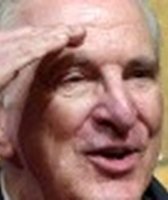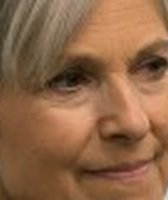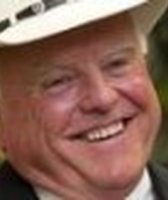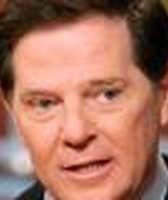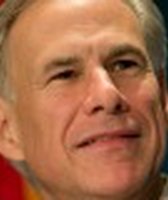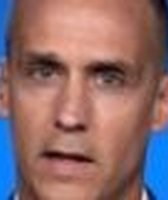Stand up for the facts!
Our only agenda is to publish the truth so you can be an informed participant in democracy.
We need your help.
I would like to contribute
Texas’ governor-elect may have been California dreaming a little by vowing to lift elite Texas universities in national rankings.
Broadly, Greg Abbott, set to be sworn in as governor Jan. 20, told reporters in early December, "we will begin the process of elevating Texas higher education higher and better than it's ever been before." Notably, Abbott said, flashing the fingers of his right hand, "five of the top 10 public universities in the country are in California with none being from Texas. We will begin the process of ensuring that we elevate some of Texas’s elite colleges and universities into the top 10 nationally."
How this might happen hasn’t been detailed, though Abbott said in a higher education plan issued in September that he wants the state to juice its Texas Competitive Knowledge Fund by 25 percent, or $40 million, in the 2016-17 budget. The fund, established by state lawmakers in 2007, bankrolls research programs at eight of the state’s public universities with the aim of attracting top faculty.
Abbott’s California-Texas comparison holds up per the latest rankings by a prominent magazine, though a competing rank-o-meter (sorry) gives more love to the University of Texas.
We wondered why the Texas universities rank down, relatively speaking. We also asked after whether Abbott’s goal can easily be achieved; that isn't clear.
Abbott cites rankings
Abbott himself cited U.S. News and World Report’s latest rankings of state colleges when he released his higher education plan. The magazine's September 2014 report ranked five University of California institutions among the nation’s top 10 public universities: the schools in Berkeley, Los Angeles, San Diego, Davis and Santa Barbara. Texas’ highest-ranked public college, The University of Texas at Austin, landed 17th; Texas A&M University was 25th.
Forbes, the other outfit that ranks colleges, placed UT-Austin at No. 10 among the Best Public Colleges 2014 as of July 2014 -- if you disregard Forbes’ rankings of the nation’s military academies in positions 1 through 3 nationally. Forbes also ranked UT’s flagship ahead of three UC schools (in Davis, Santa Barbara and San Diego) that were subsequently ranked in the top 10 by U.S. News.
In 2014, U.S. News ranked UT-Austin 53rd among universities nationally. Houston’s private Rice University ran ahead, ranking 19th. Forbes ranked Rice 32nd among U.S. universities, placing UT-Austin 76th.
The U.S. News rankings of the two Texas schools haven't changed much since the universities were first ranked (UT in 2000, A&M in 2004), according to data compiled by The Chronicle of Higher Education. Out of over 100 national universities, UT-Austin ranked 44th in 2000 and 53rd in 2004.
UT-Austin responds
To our inquiry, a UT official told us it’s been working to improve results, such as graduation rates, affecting its ranking. Carolyn Connerat, the UT-Austin associate vice provost, said by phone that in 2011, UT-Austin set a goal of graduating 70 percent of its students in four years by 2017.
While checking a claim about UT’s graduation rates in 2013, we found 53 percent of UT students got degrees in four years. According to a September 2014 UT-Austin press release, the four-year graduation initiative was bearing positive effects after two years of implementation.
Connerat said the UT plan has swept in improvements in freshman support and a revamp of its course registration system intended to help students land needed classes.
We inquired next into how U.S. News and Forbes settled out their respective rankings.
Metrics of excellence
By phone, Robert Morse, director of data research at U.S. News in Washington, D.C., said universities were ranked in seven weighted categories to determine overall ranks.
According to U.S. News’ methodology of the college rankings, universities were assessed based on:
- A reputation survey filled out by leaders in academia, from high school counselors to university presidents (22.5 percent of the overall ranking);
- Percentage of students who leave each school either after one year or without graduating (22.5 percent);
- Class size, student-faculty ratio, faculty salaries, percentage of full-time faculty and of faculty with the highest degree in their field (20 percent);
- Quality of students accepted, determined by admissions exam scores, high-school class ranks and each university’s acceptance rate (12.5 percent);
- Financial resources, determined by a university’s yearly per-student educational spending (10 percent);
- A comparison of actual graduation rates to U.S. News’ predicted graduation rates for each university (7.5 percent);
- Percentage of alumni who donate to their alma mater--indicating student satisfaction (5 percent)
Also by phone, Richard Vedder, director of the Washington, D.C-based Center for College Affordability and Productivity, which calculates the Forbes’ rankings, called U.S. News "the granddaddy of college rankings" and said its ratings could be trusted. Significantly too, he said, each ranking system uses different metrics.
Vedder said U.S. News’ rankings are based largely on inputs (like the quality of students admitted) while the center focuses on outputs (like graduate success rate).
Forbes’ methodology is driven by five weighted categories:
- Success of graduates, based on graduate salaries and how many make the center’s annual list of American leaders, which includes CEOs, directors, government officials and performers in top symphonies (32.5 percent);
- Student satisfaction, determined by ratings on RateMyProfessors.com, where students anonymously assess their schools, and by the percentage of students who leave after freshman year (25 percent);
- Graduation rate, both actual and actual minus predicted (7.5 percent);
- Student debt, assessed by the average amount of federal student loans taken out by a student borrower at a university and student-debt default rates (25 percent);
- Academic success, determined by the number of nationally-competitive scholarships awarded to students (10 percent).
Ranking more Texas colleges
In 2014, U.S. News ranked five Texas institutions in its top public colleges. The schools and their ranks:
- The University of Texas at Austin, 17th
- Texas A&M University, College Station, 25th
- The University of Texas at Dallas, 76th
- Texas Tech University, Lubbock, 84th
- University of Houston, 106th
Texas public universities in Forbes’ rankings of 256 public universities (excluding military academies):
- The University of Texas at Austin, 10
- Texas A&M University, College Station, 26
- University of Houston, 108
- Texas Tech University, Lubbock, 115
- The University of Texas at Dallas, 157
- The University of Texas at El Paso, 168
- The University of Texas-Pan American, 170
- Texas Woman’s University, Dallas, 199
- University of North Texas, 206
- Sam Houston State University, Huntsville, 206
- The University of Texas Arlington, 220
- Lamar University, Beaumont, 218
- Texas A&M University Corpus Christi, 220
- Texas State University, San Marcos, 229
- Stephen F. Austin State University, Nacogdoches, 231
- Texas A&M University-Kingsville, 243
- The University of Texas at San Antonio, 251
- Texas A&M University Commerce, 254
- Texas Southern University, Houston, 259
Vedder said: "UT would be the only public university that has a shot make making top 10" any time soon, "these rankings don’t change that radically, that quickly."
Among public institutions (excluding military academies) in Forbes’ 2014 rankings, UT slipped from 9th to 10th since the previous rankings in 2012; Texas A&M tumbled six spots, the center told us.
Morse likewise said it’s possible for UT-Austin to break into the top 10 public schools.
To have climbed into the top 10 in 2014, he said, UT would have had to rank 13 schools higher, or 40th, among all colleges nationally. Morse said by email: "That possibility would be based on UT-Austin having a real long-term improvement strategy which would need to be backed by resources to improve in many of our ranking factors."
Morse speculated the medical school set to open in Austin would probably boost UT’s ranking, but not until the school graduates its first class, which should happen sometime around 2020, the Austin American-Statesman said in a recent news story. Separately, according to a Dec. 5 Statesman news story, Texas Higher Education Commissioner Raymund Paredes plans to ask lawmakers in 2015 for a 12 percent hike in public university funding, including more funds for student financial aid.
What needs improvement?
Finally, we identified the factors influencing UT-Austin’s ranking by U.S. News and Forbes by seeking the university’s respective scorecards from Vedder and Morse, each of whom emailed us UT’s ranking by his organization’s criteria.
By U.S. News’ assessment, UT ranked worst in graduation rate, falling in the 62nd percentile nationally at number 167 of 268. This means 38 percent of the ranked colleges had better graduation rates. Forbes also was critical of UT’s graduation rate, ranking UT 338th of 650, or in the 52nd percentile. (Keep in mind each ranking has a distinct gauge of graduation rates.)
Per Forbes, UT’s lowest rank came in student-debt default rates, in which it ranked in the 60th percentile--number 388 of 650. We’ve previously found student debt of note: In June 2014, we found the average student-loan debt of Texas borrowers to be between $22,000 and $25,000.
Forbes and U.S. News also ranked UT low in faculty quality. U.S. News ranked UT 118 of 268 in faculty resources, in the 44th percentile, while Forbes ranked UT’s RateMyProfessors.com scores 378 of 650, in the 58th percentile.
According to U.S. News, UT also ranked lowly in its alumni-giving rate (39th percentile, or 104 of 268).
UT’s highest ranking, according to U.S. News, came in its reputation among academic leaders, while Forbes ranked it most highly in graduates who become American leaders.
Our Sources
News story, "Greg Abbott names priorities and team to carry them out," Austin American-Statesman, Dec. 8, 2014
Document, "Greg Abbott’s Educating Texans Plan," GregAbbott.com, posted September 2014 (accessed Dec. 11, 2014)
Story, U.S. News & World Report rankings, "Top Public Schools," "National Universities Ranking," July 15, 2014
Forbes rankings, "Top 25 Best Public Colleges 2014," "America’s Top Colleges," July 30, 2014
Document, "U.S. News Rankings Through the Years," The Chronicle of Higher Education, September 2007
Telephone interview, Carolyn Connerat, associate vice provost, The University of Texas at Austin, Dec. 15, 2014, Austin, Texas
Article, "How U.S. News Calculated the 2015 Best College Rankings," U.S. News & World Report, Sept. 8, 2014
Telephone interview and emails, Robert Morse, director of data research, U.S. News and World Report, Dec. 8 and 11, 2014, Washington, D.C.
Telephone interview, Richard Vedder, director, Center for College Affordability and Productivity, Dec. 10 and 12, 2014, Athens, Ohio
Article, "Ranking America’s Top Colleges 2014," Forbes, July 30, 2014
Document, "Compiling the 2014 Forbes/CCAP Rankings," Center for College Affordability and Productivity, 2014
Emails, Christopher Denhart, chief research assistant, Center for College Affordability and Productivity, Dec. 10, 2014, Washington, D.C.
Email, Joey Williams, communications coordinator, Office of the Executive Vice President and Provost, The University of Texas, Dec. 15, 2014

